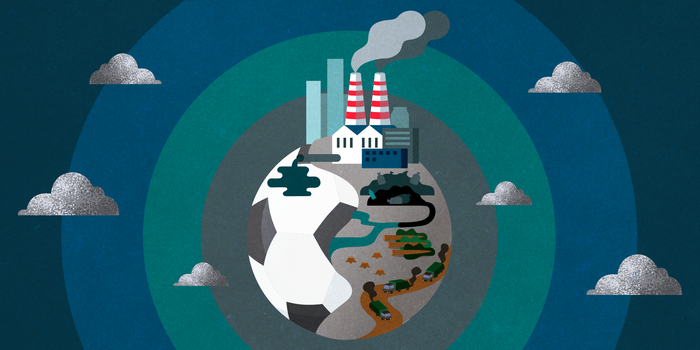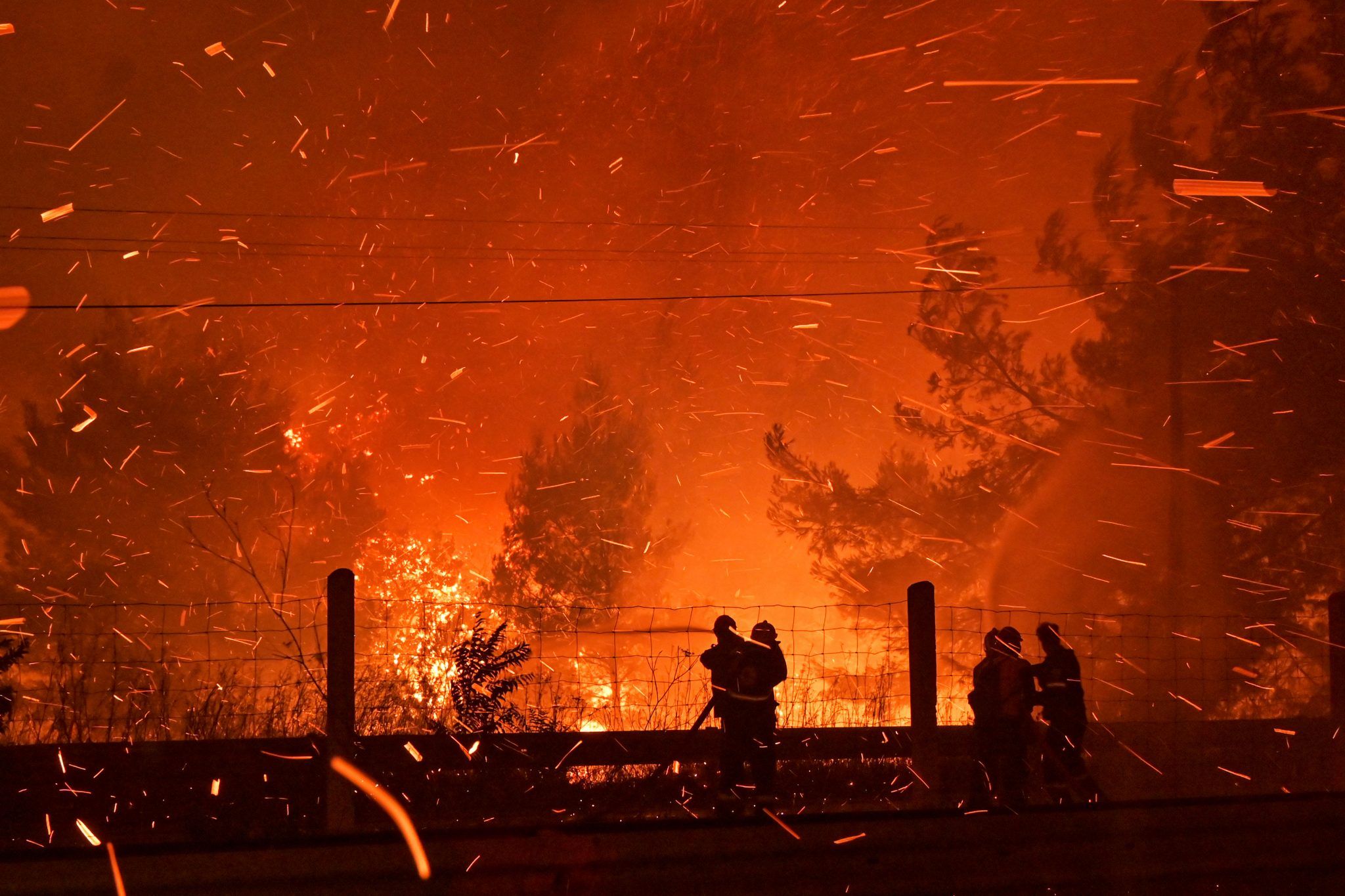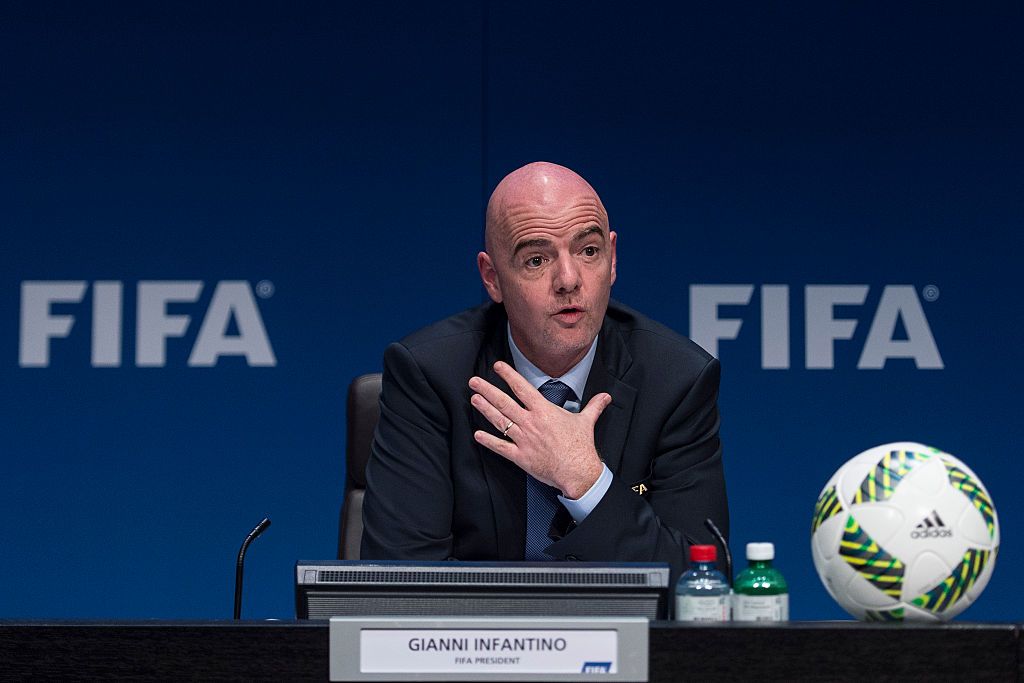Is football doing anywhere near enough to tackle the climate crisis?
This, the experts say, is our last chance. The climate crisis is very real: the signs – from searing heatwaves to melting glaciers and deadly floods – are growing increasingly common.
Last summer, as parts of western Germany and Belgium were reeling from the devastating floods which claimed the lives of over 200 people, as wildfires ripped through vast areas of Greece, Turkey and Sicily, a harrowing report from the UN’s Intergovernmental Panel on Climate Change delivered a stark warning.
Human activity is changing the climate in unprecedented and sometimes irreversible ways, it said. As temperatures continue to rise, so too will incidents of flooding, heatwaves and droughts – all increasing in their severity. The report, UN Secretary General António Guterres warned, was a “code red” for humanity; the alarm bells deafening, evidence irrefutable.
If catastrophe is to be averted, drastic and immediate action needs to be taken, the report added. Meeting the Paris Agreement goal of limiting warming to 1.5C above preindustrial levels requires high-polluting countries such as the UK to slash their emissions within the next decade. Everyone must play their part if targets are to be met, life as we know it must change.
Like all things, football has a duty to change, too. The problem, though, is that as an industry – particularly towards the pinnacle of the professional game – the sport has an incredible knack of insulating itself from the things that affect the outside world. Look no further than the pandemic. While the rest of us endured lockdown upon lockdown, football had a short pause and simply carried on in something close to a normal fashion. Yes, money was tighter, but not tight enough to prevent clubs from ploughing in all they could into new signings.
While COVID-19 wasn’t enough to completely derail elite football, the sport is not immune to the climate emergency. But is it doing enough, or – as is often the way – is football too fixed to its obsession with growth and money to take this as seriously as it should?
A couple of weeks ago, Manchester United made the decision to fly to Leicester for a Premier League game. It was later explained that unforeseen problems on the M6 justified the need to take a plane, not a coach, for the 100-mile journey. It’s a decision that, with COP26 on the horizon, has been lambasted. Dale Vince, chairman of Forest Green Rovers, has been amongst the most vocal of critics, describing it as “climate vandalism”.
“Taking the coach would be nine times more carbon efficient than flying in that situation,” says Dr Milena Buchs, Associate Professor in Sustainability, Economics and Low Carbon Transitions at Leeds University.
“Assuming there are 30 in the group making the journey, the flight would cost 1.5 tonnes of carbon. If you want some figures to put that in perspective, a good comparison is that the average carbon footprint per person in the UK is about 10 tonnes for a whole year. That’s everything we do: travel, food, heating our homes. It all amounts to 10 tonnes per person in a year. 1.5 tonnes out of that is quite a chunk.”
United announced in July they were teaming up with Renewable Energy Group, Inc. They have since defended their decision to fly to Leicester, producing a list of measures the club has taken to become more sustainable. With tight turnarounds between games in a congested schedule, they are by no means the only English club guilty of occasionally using internal flights.
“Sadly, UK internal flights have the highest carbon footprint per passenger-kilometre (pkm) of all possible forms of travel,” Dr Buchs adds.
“So many part of our lives are unsustainable now. The more we rethink these different parts of our lives, the better it is. That way we can make a difference.”
Football as we know it is unsustainable. We are frequently reminded that UK football clubs – some of the country’s most globally recognised brands – are doing more to adjust, but if significant change is to come across the game, more is needed from those who govern it.
Approached for comment by JOE, the Premier League said that sustainability was of great importance to them and their stakeholder clubs and highlighted work being done in reducing single-use plastic in stadia, reviewing suppliers and contractors and looking at energy sources and modes of transport used. They have a partnership with Sky Ocean Rescue, have created award-winning teaching resources to educate primary school children on the issue of plastic pollution.
There is, by their own admission, plenty more to be done. Championing net zero carbon football matches is great for raising awareness of these issues, but groups of away supporters forced to take thousands of cross-country car journeys instead of a few train services because kick-off times have been moved for the convenience of a TV audience might point to the irony.
All three MUFC away games in Dec conveniently rescheduled so it's now too late to take last trains back to Manchester from Norwich, Brentford and Newcastle. Reckon anyone in the decision making process gives much of a toss about football fans who actually attend football matches?
— Andy Mitten (@AndyMitten) October 18, 2021
Further up the tree, UEFA has a commitment to compensate for all greenhouse gas emissions generated by its football competitions, yet still saw fit to spread last summer’s Euros across an entire continent. From this season, it launched an entirely new club competition, meaning even more teams – and tens of thousands more fans – will be flying across Europe in the name of football. Given that aviation is responsible for around 2.4% of global CO2 emissions, is encouraging more flights the answer for an organisation truly trying to make a difference?
The same accusations can be levelled at FIFA. Despite outlining a desire for next year’s Qatar World Cup to be a carbon neutral tournament, a recent report estimated it will be responsible for 3.6 million tonnes of carbon dioxide – a steep increase on the 2.1 million tonnes generated by the 2018 World Cup in Russia. Significantly reducing this figure at the next tournament, held in North America in 2026, becomes a challenge when factoring in that it will be the first of it kind to feature 48 teams – not 32.
And what about beyond that? FIFA’s plans to hold World Cups every two years suggest they are motivated mainly by something else, not the desire to heal the planet.
How football tackles the climate emergency goes far, far deeper than just the issues touched on here. A start has been made, but in many cases, such pledges still feel more like empty gestures rather than meaningful action. One obvious next step should be for football’s governance to curb its recent greed-fuelled pursuit to expand in any way possible.
Huge changes have to be made. Our perception of what is normal has to be shifted in all aspects of life if catastrophe is to be avoided. Why, then, should football be any different?
Related links:
- What the hell is COP26 and will it actually change anything?
- The biennial World Cup is a cynical ploy to squeeze more money out of football, nothing more
- UEFA threatens European and South American boycott of biennial World Cup
RELATED ARTICLES






MORE FROM JOE
























MORE FROM JOE

























